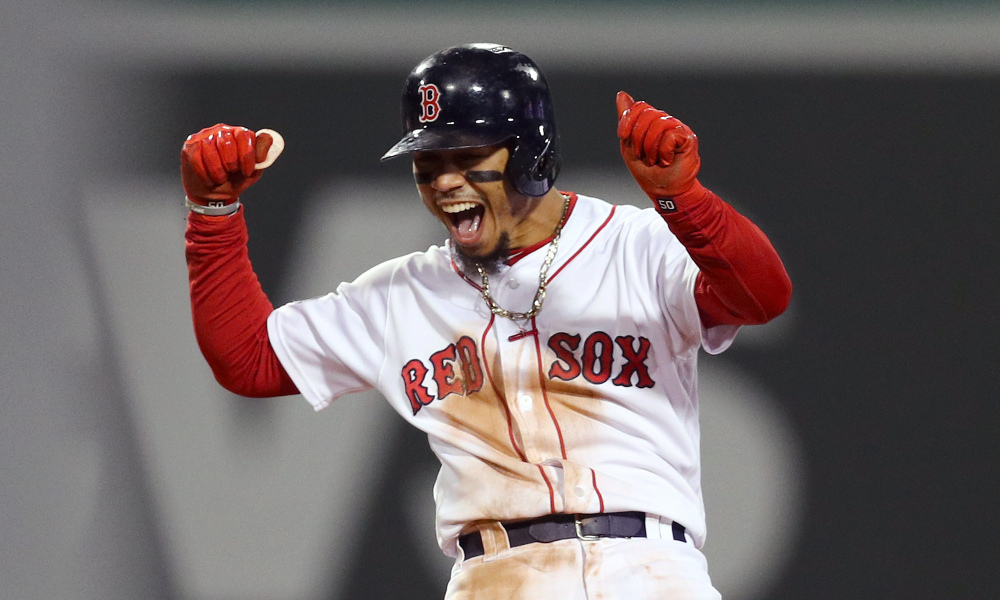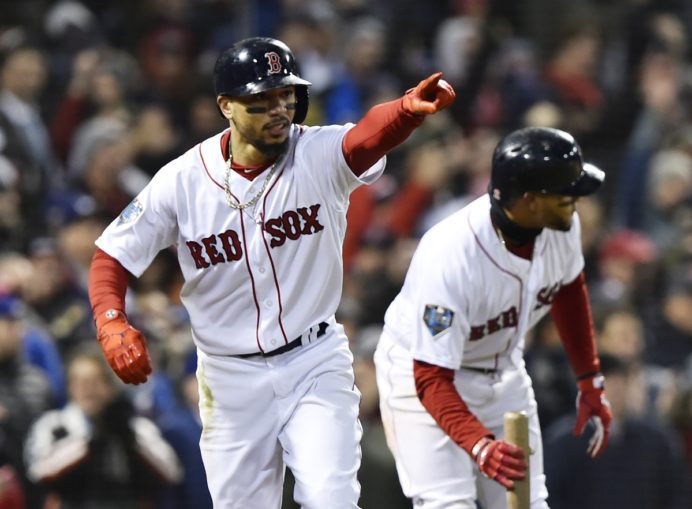
The New York Mets weren’t the only disappointing team in 2019. Travel a few hours up the coast and you will find the Boston Red Sox. Despite winning the World Series in 2018, they finished in third place with an 84-78 record, 19 games behind the first-place Yankees. After parting ways with Dave Dombrowski, they have many tasks this offseason. The task that piques the Mets interest, however, is the Red Sox’ need to shed payroll.
Right now, the Red Sox have roughly $223.3 million on the books for next season. Designated hitter J.D. Martinez is owed $23,750,000 in 2020 and has an opt-out which he could exercise and become a free agent, but it is unlikely as of now. Mookie Betts ($20 million in 2019), Jackie Bradley Jr. ($8.55 million), Eduardo Rodriguez ($4.3 million), Sandy Leon ($2.48 million), and others are arbitration-eligible. That $223.3 million might shrink a little bit, but as of now, Boston’s payroll is projected to be $238.8 million in 2021.
No matter how you look at it, the Red Sox must shed significant payroll this offseason. The Competitive Balance Tax, or CBT, will be $208 million for the 2020 season. That means if the Red Sox payroll is above that mark, they must pay significant taxes. Every dollar spent above $208 million will be taxed at 50%, anything over $228 million will be taxed at 62%, and anything after $248 million would be taxed 95%. If they get under the $208 million mark, however, the taxes reset as there are penalties for passing the CBT in consecutive seasons (which they did in 2019).
“The CBT is always a guidepost in our budgeting as we build our financial plans for the following season,” Red Sox President Sam Kennedy told reporters Monday. “We use CBT as one guidepost… I believe in the last 17 years, we’ve been over that CBT threshold 10 times and we will continue to demonstrate a willingness to go over. That said, John [Henry] made it clear that there is a goal to try to get under the CBT in 2020. But he also said, and Tom followed up and clarified, that that is a goal but not a mandate.”
“There is a way, but obviously it will be difficult given the nature of the agreements and the contracts we have in place.”
What does this mean for the Mets?
After a “too little too late” season, the Mets have an opportunity to improve this offseason. While the free-agent class is limited, the Red Sox might be a good place to find some pieces.
2018 AL MVP Mookie Betts seems to be available for the right price. He was paid $20 million last season and has one more year of arbitration before becoming a free agent after the 2020 season, with some estimates putting his projected 2020 salary around $30 million. While the Red Sox could hold onto him until the trade deadline (or the whole season), they would get a bigger haul in a trade if they move him this offseason.
Betts, who turns 27 on October 7, hit .295/.391/.524 with 29 home runs, 80 RBI, 16 stolen bases, an MLB-most 135 runs-scored, 135 wRC+, 6.8 bWAR, and 6.6 fWAR. His 2018 was remarkable as he hit .346/.438/.640 with 32 home runs, 30 stolen bases, a 185 wRC+, 10.4 fWAR, and 10.9 bWAR.
The Red Sox also have an impressive catcher in Christian Vazquez. The 29-year-old hit .276/.320/.477 with 23 home runs, 102 wRC+, and 3.5 fWAR in 2019. While he would be a slight downgrade offensively from Wilson Ramos, Vazquez is one of the best defensive catchers in the game today as he ranks 15h in baseball in fielding runs above average (FRAA) with 7.8 according to Baseball Prospectus.
Vazquez is owed $4.2 million in 2020 and $6.25 million in 2021, with a $7 million team option for 2022 (with a $250,000 buyout). He is probably unavailable, considering the Red Sox might non-tender backup catcher Sandy Leon who was paid $2.48 million in 2019, but if he is made available and the Mets choose to upgrade defensively, he would be a great target.
Other players like Andrew Benintendi, Jackie Bradley Jr., Sandy Leon, Matt Barnes, or Brandon Workman could interest the Mets as well.
What would the Red Sox be looking for in return?
First of all, they want to shed payroll, so they’ll want young, cheap players in return. They will not be able to go out and buy free agent players, however, so they must fill the holes in their roster via trades.
While they have J.D. Martinez manning the designated hitter position, the Sox are losing both of their first basemen to free agency – Mitch Moreland and Steve Pearce. They now have a gaping hole there and, before you scroll down to the bottom of the page and yell at me, I am not suggesting the Mets trade Pete Alonso.
What I am suggesting is the Red Sox might be seriously interested in Dominic Smith and/or J.D. Davis. Both of those players showed tremendous value in 2019, and they can both play a decent first base. The Red Sox will not find many other opportunities to fill first base as they have with the Mets, and Mets GM Brodie Van Wagenen can take advantage of that.
The Red Sox will also be looking for bullpen help this offseason, and the Mets could have them bite on that. Edwin Diaz, Seth Lugo, Justin Wilson, and the rest of the bullpen can be put on the table if a talent like Mookie Betts is made available. The Mets have the salary room to add free-agent relievers – The Red Sox do not.
Lastly, the Sox will surely be looking to bolster their starting rotation as while they have Chris Sale, David Price, and Eduardo Rodriguez under contract, they have no other viable options under contract. The Mets, meanwhile, have guys like Marcus Stroman, Steven Matz, and Noah Syndergaard that could also be made available if the Sox offer enough in return.
Could the Mets swing a trade for Mookie Betts? It’s possible. If anyone has what the Red Sox need, it’s the Mets. The problem is, the Mets have a lot of large contracts to pay too, and adding one contract worth around $30 million for just one season of Betts would be tough to swing. The Mets and Red Sox match up for some kind of trade, but exactly what that trade would look like remains to be seen.














